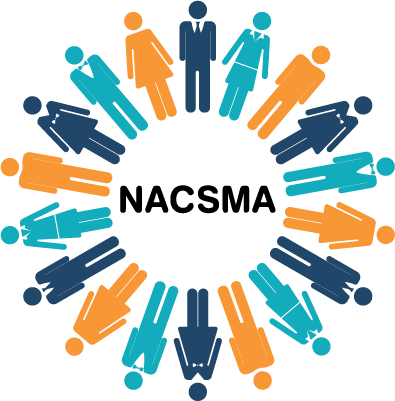CULTURE OVERHAUL
Questions to Determine Culture
Industry Content Supporter:
Steven Cramer
Sr. Vice President Operations
https://www.linkedin.com/in/scramer
To deliberately create culture takes work. It is not impossible it just takes commitment. Letting it just happen takes even more work to right and correct. Righting the existing culture can also be intentionally orchestrated with some proper tools.
Here is a list of insightful questions that Brené Brown, author of Daring Greatly, created to identify culture that can help you get started.
– What behaviors are rewarded? Punished?
– Where and how do people spend resources like time, money and attention?
– What rules and expectations are followed, enforced and ignored?
– Do people feel safe and supported talking about how they feel and asking for what they need?
– What are the sacred cows? Who is most likely to tip them? Who stands the cows back up?
– What stories are legend? What values do they convey?
– What happens when someone fails? Disappoints? Or makes a mistake?
– How prevalent are shame and blame and how are they showing up?
– How are uncertainty, risk and emotional exposure perceived?
These questions address the “unspoken” norms and this is where new managers and new agents struggle. Because they are unspoken it takes experience and tenure to know about, for example “sacred cows”, what really happens when you make a mistake and what rules are enforced and by whom. By having an honest conversation, you can intentionally begin to create the desired culture.


Change Existing Culture
Corporate culture refers to the beliefs and behaviors that determine how a company’s employees and management interact and handle outside business transactions. Often, corporate culture is implied, not expressly defined, and develops organically over time from the cumulative traits of the people the company hires.
Changes to the existing culture is possible with a plan. It will take work, commitment and a strategy. You want to consciously create a customer and employee-centered culture. By consciously creating culture you control it rather than the culture controlling organization.
Your strategy includes:
– Aligning the management team: top down alignment.
– Deciding what culture is and is not to your site.
– Determine values, attitudes and behaviors you want to bring into the center and/or company.
– Create “messaging” around these values, attitudes and behaviors. Every team meeting hears the same consistent message
– Create an accountability process
When managers sway from the values how will you address them to bring the focus back? This is where companies fail. Culture gets swayed by individuals and then it seems to change and morph into something other than what was initially intended.
Change the Regime
Culture starts at the top. The attitude, beliefs and behaviors are passed down from one level to the next and finally the front line. Attitude and behavior never travels up the ladder only down. Change the attitude and behavior at the top and watch your supervisors and agents change theirs.
If you can’t change the attitude, behaviors and beliefs of the management team, perhaps you want to replace them with a more effective team. Change the management team and you will change the culture.
Ask the People
Every site manager has the idealistic vision of running a contact center where everyone is happy, has fun, loves their coworkers, and brings their dog to the office. Take off the virtual reality glasses and ask the people.
Gather employees that exemplify the contact center’s culture; managers, supervisors, and even agents and ask them “what do you like about the current culture?” “What don’t you like?” “What is culture and does it matter?” Don’t expect everyone to agree on a definition, that’s not the goal. You want to have a lively conversation that sets the direction to where you want culture to go, how you will get there and why. It may take a few sessions, be patient with the process. It’s a good idea to take these conversations to an offsite location. Perhaps invite others from other locations. While a company has a corporate wide culture, each location has a unique character all its own.
If you want to sync up multiple locations and change culture throughout the organization, then you want to invite folks from every location. The people will provide you with the insights you didn’t see yourself. Just ask the people.
Reward Employees for Advancing Culture
Industry Content Supporter:
Stephen Paskel
VP, Senior Technology & Global Operations Manager
https://www.linkedin.com/in/stephen-paskel
The company’s mission statement is filled with values and culture statements can be empty phrases unless backed up with some action. In the daily team huddle, agents hear messages about company values, culture initiatives (work/life balance for example), policy and procedure updates and metric review.
Communicate consistently the values, culture and behaviors explicitly that are desired. Repeat, repeat and repeat the messages again and again. The messaging never stops once you let your foot of the gas your cultural revolution will lose momentum.
One strategy to give your culture energy is to take the time to reward employees you identify that are advancing the desired culture and be honest with those you don’t. By rewarding those that are modeling the behavior you desire, it will continue with those you reward and it will also be contagious to those that want to be rewarded. Another strategy is to have serious conversations with those employees that are not progressing the culture. You can’t ignore those; they are like wildfires- if left alone they will burn everything in their path. This is how culture turns from pleasant and productive to dismal and reckless.
INDUSTRY SERVICE TIPS
1. How work gets done is changing and it is pushing open floor plans to replace segregating cubes; cafes replace boring break rooms and perimeter offices are disappearing creating flexibility, mobility and community.
2. Use color, not just any color but colors that impact productivity like blue. Blue is a stable and calming color and is proven to help workers focus on their tasks.
NEXT STEPS
Reduce workman’s comp, absenteeism, turnover and injuries by investing in ergonomic furniture and implementing an ergonomic training program.
Showing agents how to be more comfortable at the workstation while agents stare at monitors, sit all day, and deal with challenging customers will reduce the muscle tension; eye strain, headaches and a host of other injuries and illness that come from poor functioning workstations.
Happy, comfortable agents make for productive agents!
VIDEO FROM OUR EXPERTS



INDUSTRY EXPERTS

Company 1

Company 2

Company 3
NETWORKING FOR CONTACT CENTER PROFESSIONALS
ABOUT NACSMA
NACSMA brings together like-minded professionals focused on advancing the customer contact industry and creating career growth.
BEST-IN-CLASS
Management of a best-in-class contact center sites require the continuous review of Agent Sourcing Models, Organizational Training and Management Development Programs.
NACSMA MEMBERSHIP
NACSMA is a professional, non-profit association whose members represent customer contact organizations and the vendors who support them.
IMPLEMENTATION
When a contact center organization expands to an additional site or requires new space, the steps to properly implement are unique to each organization but do have standard phases.
